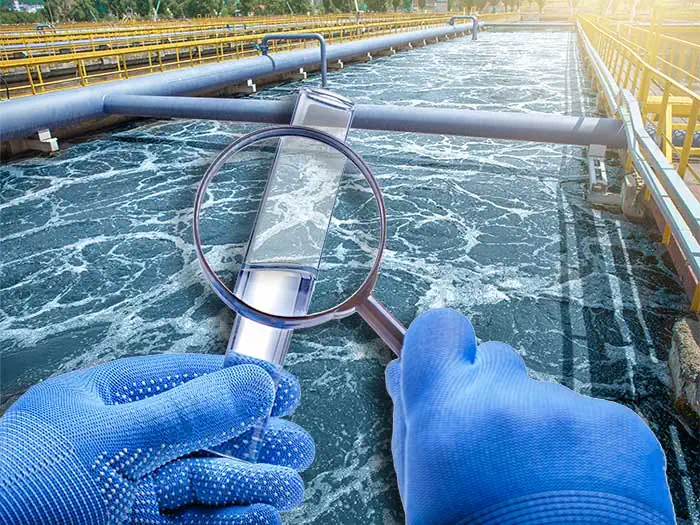Innovative PFAS Therapy Solutions for Safer Water
The enhancing prevalence of PFAS contamination in water materials necessitates an important examination of ingenious therapy services. Additionally, emerging bioremediation techniques supply an even more lasting technique to dealing with PFAS obstacles. pfas management.
Introduction of PFAS Contamination
PFAS contamination has become a significant ecological and public health and wellness issue. Per- and polyfluoroalkyl substances (PFAS) are a team of synthetic chemicals known for their determination in the setting and body, leading them to be frequently described as "for life chemicals." These compounds have been extensively used in various markets, consisting of firefighting foams, water-repellent textiles, and food packaging, largely due to their water- and grease-resistant residential or commercial properties.
The widespread use PFAS has caused their detection in dirt, water supplies, and also in the blood of people and pets. Research studies have actually linked PFAS direct exposure to many health issues, including developmental impacts in infants, body immune system disorder, and different forms of cancer cells. Furthermore, the environmental perseverance of these substances complicates their deterioration and removal, raising issues regarding long-lasting ecological effects.
Governing bodies are increasingly implementing rigorous guidelines to keep an eye on and lower PFAS levels in alcohol consumption water and other environmental mediums. As recognition of PFAS contamination grows, it has actually ended up being vital for areas and industries to seek reliable treatment services to reduce exposure and guard public health.
Advanced Filtering Technologies
As the urgency to resolve PFAS contamination magnifies, advanced filtration innovations have actually emerged as a pivotal element in the removal efforts targeted at eliminating these relentless chemicals from water sources. These modern technologies take advantage of innovative mechanisms to properly target and record PFAS substances, which are infamously resistant to conventional therapy methods.
One of the most promising techniques is the usage of granular turned on carbon (GAC), which adsorbs PFAS particles due to its high area and permeable framework. This technique has actually been extensively executed in both municipal and industrial settings, demonstrating considerable decreases in PFAS focus. Additionally, ion exchange resins have gotten grip, especially made to precisely bind PFAS ions from water, thus promoting their removal.
Membrane purification technologies, such as reverse osmosis and nanofiltration, also reveal efficacy in PFAS elimination by literally separating contaminants from water - pfas management. These systems can achieve high levels of pureness, making them ideal for drinking water applications
Chemical Treatment Technologies
Many chemical therapy technologies are being explored to efficiently address PFAS contamination in water materials. One appealing technique entails using advanced oxidation procedures (AOPs), which make use of effective oxidants such navigate here as ozone, hydrogen peroxide, or chlorine dioxide incorporated with UV light to damage down PFAS substances right into less harmful materials. This technique has actually demonstrated efficacy in lab settings, showing possible for scalability in real-world applications.
Another ingenious method is the growth of ion-exchange resins especially developed to target PFAS. These materials can uniquely adsorb PFAS substances from water, enabling their removal during treatment processes. Current improvements have enhanced the effectiveness and capacity of these resins, making them a desirable alternative for water therapy centers.
Additionally, scientists are investigating making use of chemical representatives like persulfate and ferrous ions to boost the deterioration of PFAS in polluted water. These representatives can generate chain reaction that promote the break down of relentless PFAS compounds.
Arising Bioremediation Strategies
Recent developments in chemical therapy technologies have paved the method for checking out bioremediation strategies as a sensible choice for addressing PFAS contamination. Bioremediation takes advantage of the all-natural metabolic processes of microorganisms to deteriorate or transform contaminants, making it an enticing technique for dealing with consistent contaminants like PFAS.
Emerging strategies in bioremediation include using genetically engineered bacteria that can especially target and damage down PFAS compounds. These microbial pressures are being created for their boosted degradation capacities, increasing the efficiency of the see this removal procedure. Furthermore, scientists are checking out the potential of plant-assisted bioremediation, where specific plant varieties might uptake and sequester PFAS from infected dirt and water.
An additional appealing strategy is the application of bioaugmentation, which includes presenting valuable bacteria right into polluted atmospheres to improve the degradation of PFAS. This technique can facilitate faster remediation timelines and improve total effectiveness.

Regulative Structures and Requirements
A comprehensive regulatory framework is necessary for effectively taking care of PFAS contamination and guaranteeing public health and wellness security. The boosting acknowledgment of per- and polyfluoroalkyl materials (PFAS) as toxic wastes has actually prompted various federal and state agencies to develop standards that govern their presence in water supplies. The United State Environmental Protection Agency (EPA) has established health and wellness advisories and is pursuing setting enforceable limits for PFAS in alcohol consumption water.
State-level laws differ significantly, with some states taking on more stringent standards than those recommended by the EPA. These regulations commonly consist of optimum contaminant degrees (MCLs) for specific PFAS substances, tracking demands, and reporting responsibilities for water utilities. In addition, arising frameworks focus on the removal of infected sites, emphasizing the need for reliable treatment technologies.

Final Thought
To conclude, the advancement and execution of ingenious PFAS treatment options are important for attending to the pervasive problem of water contamination. Advanced filtration innovations, chemical treatments, and arising bioremediation techniques jointly offer a complex technique to properly lower and weaken PFAS degrees. As regulatory frameworks remain to develop, incorporating these modern technologies will be vital to safeguard public wellness and bring back the integrity of infected water sources, inevitably adding to a cleaner and safer setting.